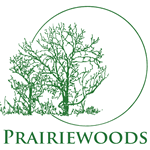Prophets, storytellers, sages, spiritual writers, poets and artists are calling us to the wild side! It is time to launch ourselves into the arms of the Beloved, to allow our full sensorium to embrace the numinous world (David Abram, The Spell of the Sensuous, Perception and Language in a More-than-Human World, 1996). Spiritual author Cynthia Bourgeault has reminded us that we need to engage the “imaginal realm” if we are to enter more fully into the complexity and nuanced relationships required in this liminal time, an “intertidal zone,” where the spiritual and material worlds overlap and extend beyond us (Eye of the Heart: A Spiritual Journey into the Imaginal Realm, 2020). It is time to dance with wonder and abandon! The mythic imagination is so important as we explore the “dangerous” invitation of pursuing our vocational mission, carrying within us a unique gift that is meant for the good of the whole. ”We’re here to risk everything to fulfil our calling, to walk wholeheartedly along the path which leads us there, even if that path sometimes is dangerous, or hard … That gift isn’t just about the unfolding and growth of our own individual soul—it’s about serving the unfolding of the cosmos, and participating in its journey of becoming. It’s the source of our unique capacity to transform the world, to become an eager participant in its becoming” (“Becoming who we are,” The Art of Enchantment blog at www.SharonBlackie.net, Oct. 22, 2020).
As we all struggle with the isolation and long loneliness of 2020, what if the gift being offered as an antidote to our spiritual malaise is hidden away with our “wild twin”?
In Courting the Wild Twin, mythologist Martin Shaw invites us to seek out and woo our “wild twin,” embarking on a trepidatious spiritual odyssey that serves to deepen our vocation as we engage with the natural world. Examining two ancient European fairy tales featuring the wild twin, Shaw explores the metaphor as “that part of ourselves that we generally shun or ignore to conform to societal norms––to invite them back into our consciousness, for they have something important to tell us” (https://www.chelseagreen.com/product/courting-the-wild-twin/). By challenging us to examine our fractured relationship with creation itself, we can learn to think boldly, creatively and in new ways about ourselves—as individuals and as the wider “We.” “Same old, same old” will no longer suffice.
“I believe that in the labour of becoming a human, you have to earnestly search this character out, as it has something crucial for you with it. It has your life’s purpose tucked up in its pocket. If there was something you were here to do in these few, brief years, you can be sure that the wild twin is holding the key.
Wildness attracts everybody but appears to be in short supply. Not feral, not hooligan, not brawling, but the regal wild. The sophisticated wild. So you should be gathering by now that this book is about locating your long-abandoned twin and courting it home. We’re going to use two old fairy tales to do it. And note the word court. This is a protracted affair, this locating, with the possibility of many missteps, bruised shins and hissed exchanges. Though they long for you, the twin may not broker relationship easily if you’ve been separated for many years; she wants to know you’re serious …
We begin to understand why polite society has exiled the wild twin.
But the cost of its absence is so terribly high. We exist in its consequence.
No twin, and we, as Robert Bly used to say, preserve life but don’t give life. There’s not the holy rashness that invokes the spiritual energies of the universe. The wild twin rolls the dice a little. Without eros, without risk, there’s no culture worth making. So this is a dangerous business, calling out to these brooding, exiled energies. But truth be told and nailed to the tavern wall, it’s far, far more dangerous not to.
I’m not sure we ever really, properly, catch up with our wild twin, buy matching sweaters. The pursuit is the thing, the glimpse is the thing, the jolt of their quixotic nature may be barometer enough for one lifetime. But never to search? Well, that’s missing out on life altogether.”
—Martin Shaw, Courting the Wild Twin, Chelsea Green Publishing, 2020
- Where might we have already encountered, or perhaps where might we go looking for our “wild twin,” for the sophisticated wildness and “holy rashness” of our creative selves? When did we last encounter her? When did we last court the wild twin?
- What do our other-than-human kin teach us about living into the regal wildness of our authentic human selves? What can we learn from the majestic wildness of the lioness hiding in our beloved family cat, or the wolfish appetite of our trusted canine as he prowls the backyard, howling for his mates? How might the stillness of the barred owl teach us to pay attention? What cross-species wildness inhabits the Venus fly trap as she opens fully and snaps up her supper? What might the intricate weaving and tensile strength of the spider’s web teach us about loving and cultivating the creative process? What might the unfathomable depths of the ocean and the roaring cataracts of the waterfall teach us about the implacable energy of creative flow?
- How might we let go of our staid conformity and appropriateness, of keeping up appearances, or our “supposed to be” selves in order to live into our “could be” selves? What is holding us back?
- What does it say about our authenticity if we maintain a facade of appropriateness, and as Bly says, “preserve life, but don’t give life?” How long ago were we last in touch with our wild twin? Where is she hiding within us? Where might we find and dance with the wild twin now?
—Laura Weber, Prairiewoods associate director and retreats coordinator


